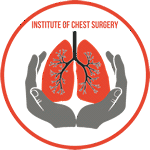Hernia and eventration of the diaphragm are medical conditions that affect the diaphragm, a crucial muscle responsible for breathing. While surgical treatment can effectively address these conditions, many patients wonder if there is a possibility of recurrence after undergoing surgery. In this article, we will delve into the factors that contribute to hernia and eventration of the diaphragm, explore the different surgical approaches for treatment, and examine the likelihood of recurrence post-surgery.
Understanding Hernia and Eventration of the Diaphragm
The diaphragm is a dome-shaped muscle that separates the chest cavity from the abdominal cavity. It plays a vital role in the breathing process, contracting and relaxing to facilitate inhalation and exhalation. Hernia of the diaphragm occurs when there is a weakness or tear in the muscle, allowing abdominal organs to protrude into the chest cavity. On the other hand, eventration of the diaphragm involves a congenital or acquired weakness, leading to the abnormal elevation of a portion of the diaphragm.
Causes of Hernia and Eventration
Hernia and eventration of the diaphragm can have different causes:
- Congenital Factors: Some individuals may be born with a naturally weaker diaphragm, making them more susceptible to developing diaphragmatic hernias or eventrations later in life.
- Trauma or Injury: In some cases, a traumatic event or injury to the diaphragm can weaken the muscle and lead to herniation or eventration.
- Surgical Complications: Previous surgical procedures in the abdominal or thoracic area may inadvertently damage the diaphragm or weaken its structure, increasing the risk of diaphragmatic issues.
- Chronic Respiratory Conditions: Certain chronic respiratory conditions, such as chronic obstructive pulmonary disease (COPD), can cause pressure imbalances in the chest and abdomen, potentially leading to diaphragmatic problems.
Surgical Treatment for Hernia and Eventration
When diagnosed with hernia or eventration of the diaphragm, surgical intervention is often necessary to correct the condition and restore normal diaphragmatic function. The specific surgical approach will depend on the severity and type of diaphragmatic abnormality:
- Laparoscopic Repair: In less complex cases, surgeons may opt for a minimally invasive approach called laparoscopic repair. This procedure involves making small incisions in the abdomen and using specialized instruments to repair the diaphragm and return abdominal organs to their proper position.
- Open Surgery: For more extensive or complicated cases, open surgery may be required. During open surgery, the surgeon makes a larger incision to access the diaphragm directly. This allows for a more comprehensive repair and manipulation of the diaphragmatic tissues.
- Tension-Free Repair: In both laparoscopic and open surgery, tension-free repair is crucial to prevent the recurrence of hernias or eventrations. This involves reinforcing the weakened diaphragmatic area with synthetic mesh or sutures to provide additional support.
Can Hernia and Eventration Recur After Surgical Treatment?
The success of surgical treatment for hernia and eventration of the diaphragm is generally high, and most patients experience significant improvement in their symptoms following surgery. However, there is always a possibility of recurrence, albeit low, in certain circumstances:
- Technical Factors: The surgical technique used, the experience of the surgeon, and the extent of the diaphragmatic issue can all impact the risk of recurrence. Patients should ensure they are treated by a skilled and experienced surgical team to minimize such risks.
- Pre-existing Health Conditions: If a patient has underlying medical conditions that weaken the diaphragm or affect healing, the risk of recurrence may be slightly higher. It is essential for patients to manage these conditions effectively in collaboration with their healthcare providers.
- Lifestyle Choices: Post-surgery, certain lifestyle choices can influence the chances of recurrence. Patients are advised to follow their surgeon’s guidelines, including maintaining a healthy weight, avoiding smoking, and engaging in appropriate physical activity.
Conclusion
Hernia and eventration of the diaphragm are conditions that require timely and effective surgical treatment to restore normal diaphragmatic function. With advancements in surgical techniques and proper post-operative care, the likelihood of recurrence is minimal. By collaborating with skilled surgeons, following medical advice, and making healthy lifestyle choices, patients can enhance their chances of successful treatment and reduce the risk of future diaphragmatic issues.
As with any medical condition, it is essential for patients to stay vigilant and attend regular follow-up appointments to monitor their progress and ensure a successful recovery. Early detection and intervention are key to managing any potential complications and maintaining optimal diaphragmatic health.







